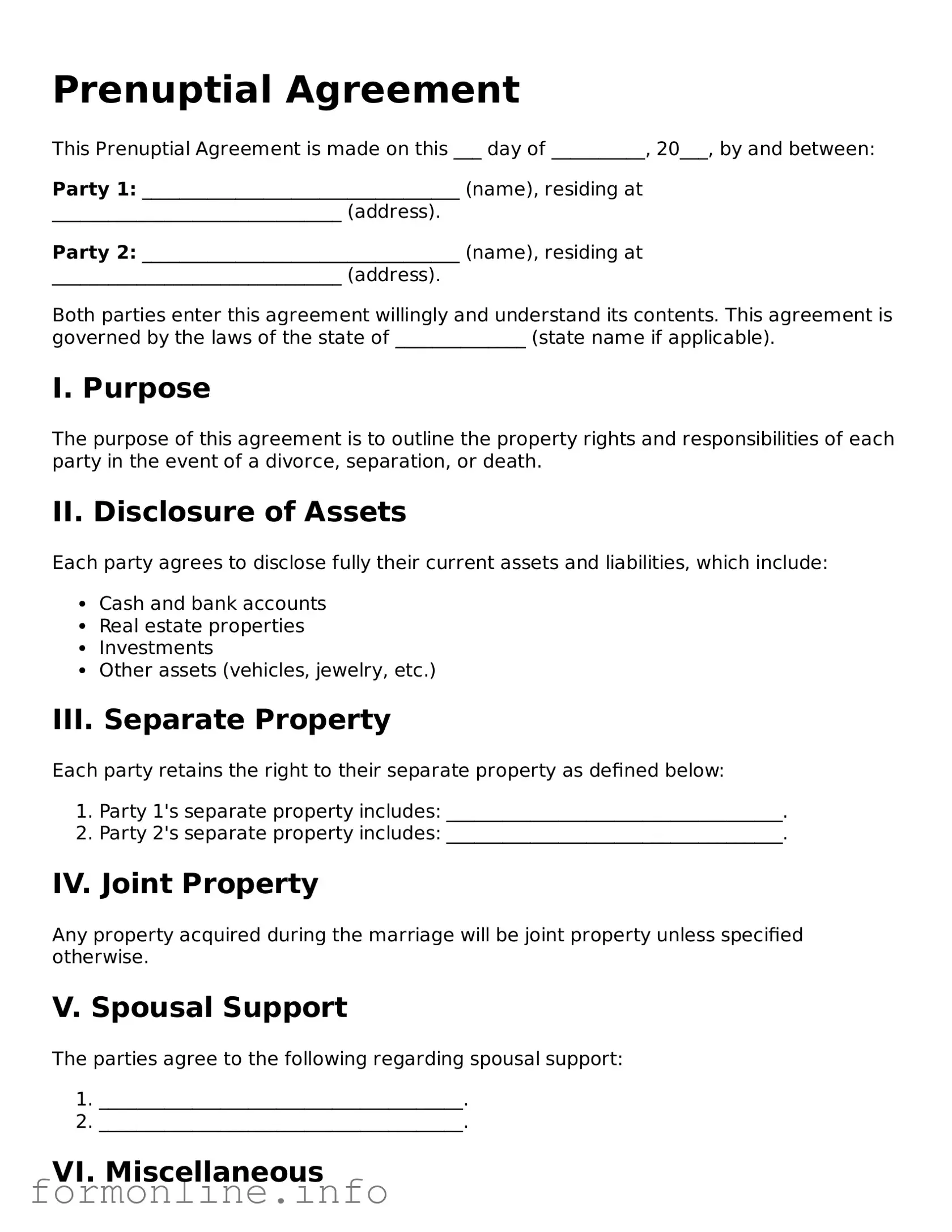Prenuptial Agreement
This Prenuptial Agreement is made on this ___ day of __________, 20___, by and between:
Party 1: __________________________________ (name), residing at _______________________________ (address).
Party 2: __________________________________ (name), residing at _______________________________ (address).
Both parties enter this agreement willingly and understand its contents. This agreement is governed by the laws of the state of ______________ (state name if applicable).
I. Purpose
The purpose of this agreement is to outline the property rights and responsibilities of each party in the event of a divorce, separation, or death.
II. Disclosure of Assets
Each party agrees to disclose fully their current assets and liabilities, which include:
- Cash and bank accounts
- Real estate properties
- Investments
- Other assets (vehicles, jewelry, etc.)
III. Separate Property
Each party retains the right to their separate property as defined below:
- Party 1's separate property includes: ____________________________________.
- Party 2's separate property includes: ____________________________________.
IV. Joint Property
Any property acquired during the marriage will be joint property unless specified otherwise.
V. Spousal Support
The parties agree to the following regarding spousal support:
- _______________________________________.
- _______________________________________.
VI. Miscellaneous
This agreement constitutes the entire understanding between the parties. Any changes must be made in writing and signed by both parties.
VII. Signatures
By signing below, both parties agree to the terms outlined in this Prenuptial Agreement:
Party 1: ____________________________ Date: ____________
Party 2: ____________________________ Date: ____________
